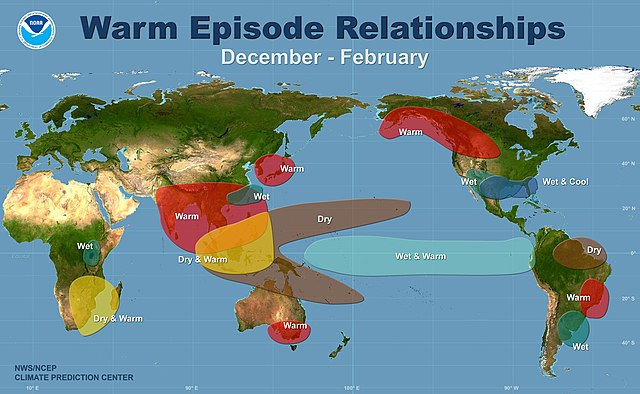The meteorological world is currently witnessing a significant shift in global climate patterns as the recent "Super El Niño," one of the most potent in recorded history, begins its decline, with climatologists now forecasting a likely transition to La Niña conditions in the upcoming months. This pivotal change from an extraordinary El Niño phase to a potential La Niña scenario heralds a critical juncture in weather dynamics worldwide, with far-reaching implications for regional climates and weather events across the globe.
Defined by unusually high ocean surface temperatures in the tropical Pacific, the current El Niño has escalated into the "Super El Niño" category, with temperatures soaring 2 degrees Celsius above the norm-a phenomenon that has only been observed on six previous occasions. "It means a very strong El Niño is ongoing," said Michelle L'Heureux, a climate scientist with NOAA's Climate Prediction Center, highlighting the rarity and intensity of the current El Niño event.
However, this formidable El Niño is showing signs of weakening, signaling an end to its peak influence on global weather patterns. "We're slightly past peak [strength] at this point," L'Heureux remarked to CNN, indicating that the most potent impacts of this El Niño may have already manifested.
In anticipation of the forthcoming climatic shift, the Climate Prediction Center has initiated a La Niña watch, suggesting a move towards cooler-than-average conditions in the eastern tropical Pacific. This transition is expected to materialize as early as this summer, with forecasters assigning a 55% probability for La Niña's development from June to August, escalating to a 77% likelihood from September to November. "Forecasters believe the switch could get totally flipped to La Niña," L'Heureux explained, underscoring the potential for a dramatic reversal in climate patterns.
The onset of La Niña typically heralds a distinct set of weather phenomena, often opposing those associated with El Niño, such as the potential for a more vigorous Atlantic hurricane season. This abrupt shift from a pronounced El Niño to La Niña could have substantial repercussions for weather trends throughout the year, especially with the prospect of an intensified hurricane season, particularly if oceanic temperatures persist at exceptionally high levels.
While El Niño and La Niña significantly sway global weather dynamics, attributing individual extreme weather events solely to these climatic oscillations is overly simplistic. "El Niño impacts don't occur in isolation anymore. There's certainly a climate change component," L'Heureux cautioned, emphasizing the intertwined roles of natural climate variability and anthropogenic climate change in shaping contemporary weather extremes.
As the global community stands on the brink of this imminent climatic transition from El Niño to La Niña, the imperative for vigilant monitoring and adaptive strategies becomes increasingly clear. From mitigating drought conditions in certain locales to preparing for heightened hurricane activity, the forthcoming months will necessitate a concerted focus on adapting to the evolving weather patterns dictated by these dominant climatic forces, all within the broader context of a warming world.






